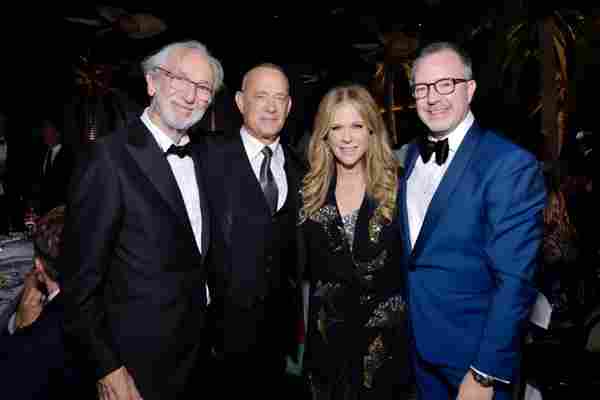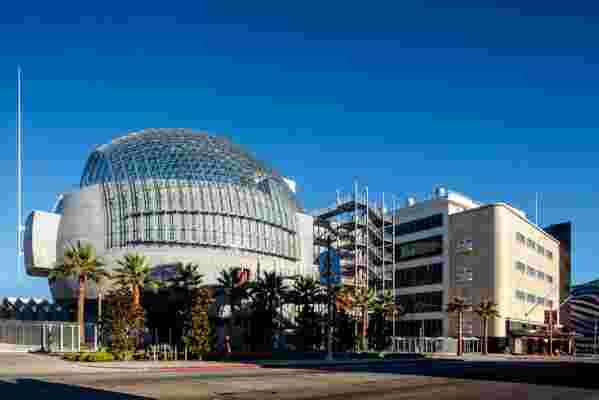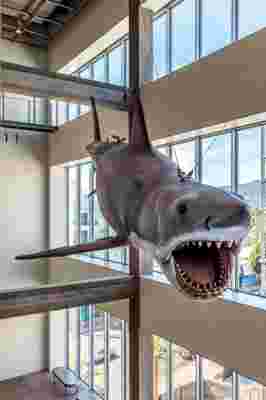When discussing the Academy Museum of Motion Pictures in Los Angeles, Renzo Piano reveals a surprising aspect of his personal and professional trajectory. “I grew up and became an architect—an architect jealous of filmmakers,” he recalls of his childhood in Genoa, Italy, where his two primary curiosities were focused on the sea and the cinema. “I really love cinema,” he says, noting it’s “one of the few arts that can move you to tears, like music does.”
Now the Pritzker Prize winner can merge his boyhood fascinations with decades of design expertise when the Academy Museum finally opens to the public on September 30th. The project located at the intersection of Wilshire Boulevard and Fairfax Avenue comprises 300,000 square feet in two buildings: The beloved Streamline Modern style featuring the former May Company department store completed in 1939 by Albert C. Martin, Sr. and Samuel A. Marx, and the state-of-the-art David Geffen Theater housed within Piano’s formidable concrete and glass sphere. The adaptive reuse portion known as the Saban Building contains the exhibition galleries designed by Why Architects , the Tedd Mann theater, a gift shop and Fanny’s , and a 10,000-square-foot restaurant and cafe designed by Commune slated to debut in October. The new signature theater is a 26-million-pound structure that appears to be either coming in for a landing or miraculously ascending, depending on your point of view or state of mind.

Architect Renzo Piano (far left) standing next to Tom Hanks, Rita Wilson, and Academy Museum of Motion Pictures director and president Bill Kramer.
Part of the puzzle for Piano and team, which included Gensler , Buro Happold and preservation architect John Fidler, was establishing a connection between the two main components. The result is what Piano calls “the flirt between the old lady”—namely, the limestone- and granite-clad May Company—“and the new flying vessel.” The Academy Museum’s rounded volumes and curves are juxtaposed with Piano’s two rectilinear and angular contributions to the adjacent LACMA complex. (Renzo Piano Building Workshop completed a masterplan on the overall site nearly two decades ago.) The site planning also flips the script on a certain Los Angeles architecture and urbanism paradigm. The sprawling parking lot that once stood behind the May Company and served as a prominent early example of the city’s emerging auto-centric habits has been replaced with a pedestrian plaza.

The project located at the intersection of Wilshire Boulevard and Fairfax Avenue comprises 300,000 square feet in two buildings.
“I love building bridges,” Piano says, pointing to the two bridges that connect the Saban Building and the Geffen Theater at the mezzanine and fifth levels. These features showcase a particularly light touch. The Barbra Streisand Bridge leads to one of the best views in town at the Dolby Family Terrace on top of the Geffen and beneath the rounded glass canopy. The suspended light-flooded passageways and darkened theater spaces throughout, both real and imagined, reinforce what the architect identifies as a leitmotif. “Cinema is about light and shadow,” Piano says. “This idea of the sequence is part of the story.”
While the 1,000-seat Geffen Theater is sumptuously awash in red carpet-inspired crimson hues with seats custom manufactured by Poltrona Frau, the Saban Building interiors take a more stripped down approach. Exposed structural elements help reinforce the curatorial mission to shed light and provide behind-the-scenes insight on all aspects of filmmaking, as well as engage with problematic aspects of its history. However, the destination doesn’t forgo moments of Hollywood glamour. The rotunda room lined with Oscar statuettes from past winners immerses viewers in an evocatively glitzy Art Deco-style setting. (Plus the Oscars Experience allows ticket holders to record their own virtual Oscar winning stage moment.)

The shark used in the iconic movie Jaws hangs from the ceiling of the new museum.
The Academy Museum is the first institution of its kind to organize a comprehensive agenda of exhibitions , public programming , screenings, and publications to shine a light on the city’s signature industry. “It’s the mother of all art forms because it brings together architecture and set design, costume, music, cinematography, writing, and nearly every creative discipline,” Kulapat Yantrasast of AD100 firm Why Architecture says. From the core multi-level exhibition Stories of Cinema and the various temporary and rotating installations that include a major survey of Hayao Miyazaki, “we didn’t want linear storytelling,” Yantrasast says. Instead, both the physical and multimedia presentations emphasize the collaborative nature of filmmaking while challenging conventional narratives. “We want different viewpoints,” he adds.
The museum’s version of a red carpet greets the visitors.
As for the eye-catching addition to the Miracle Mile campus, Piano runs through the multiple nicknames that have evolved over the life of the project. There’s the aforementioned flying vessel, as well as a zeppelin and dirigible. These metaphors apply to the power of movies to psychologically transport an audience. The concrete sphere also “has the fragility of a soap bubble,” albeit with a big difference. “This is not going to blow up. I promise,” Piano says. On that note, Piano has one specific request: Just don’t call it the Death Star.
